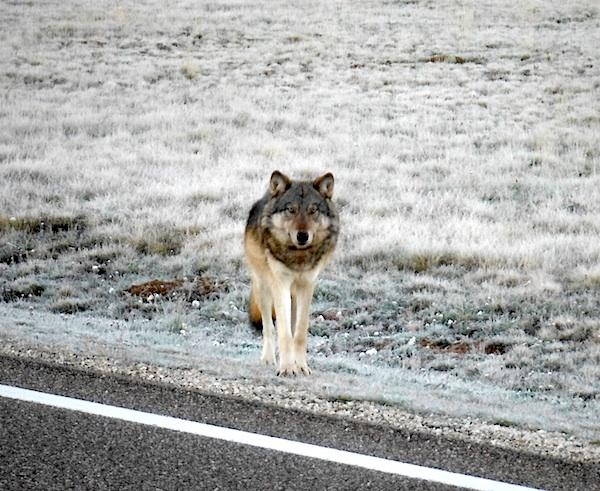
No charged will be brought against the hunter who killed this wolf, which roamed from Yellowstone to the Grand Canyon
A state and federal investigation into the killing of a protected gray wolf that ranged from Yellowstone National Park to Grand Canyon National Park before being shot in Utah has concluded without any charges being filed against the hunter.
The investigation, authorities announced Thursday, determined that the unidentified hunter mistook the female wolf, which was wearing a radio collar, for a coyote.
"The hunter reported his mistake immediately,” said Steve Oberholtzer, the U.S. Fish and Wildlife Service's Mountain-Prairie Region’s Special Agent in Charge of Law Enforcement. “This is a good reminder to all hunters to make sure they identify their target before pulling the trigger.”
The wolf, known as 914F, was killed near Beaver, Utah, last December 28. The animal had been spotted along the Grand Canyon's North Rim last fall, and geneticists from the University of Idaho's Laboratory for Ecological, Evolutionary, and Conservation determined from a DNA analysis that the wolf had been collared near Cody, Wyoming, on January 8, 2014.
The Endangered Species Act has criminal penalties for “any person who knowingly violates any provision…” of the Act. In southern Utah wolves are listed as endangered under the Endangered Species Act.
"Authorities determined the incident resulted from misidentification rather than the intentional take of a protected species," a USFWS release said. "In accordance with current policies, the government may exercise prosecutorial discretion in circumstances where a bona-fide misidentification of a protected species occurred during the course of an otherwise lawful activity."
Most wolves typically leave the pack they were born in by age three and seek out a mate to start a new pack or join another existing pack, according to Fish and Wildlife Service biologists. Long-distance dispersing wolves have been sighted over 500 miles away into neighboring states in the Northern Rockies, the West Coast and the western Great Lakes regions, they added in the release. One GPS-collared wolf traveled a total of almost 3,000 miles in the seven months prior to being killed by a banned poison in Rio Blanco County, Colorado in 2009, a dispersal distance of roughly 400 miles from her original pack.



Comments
i really do not hunt but i do fish and enjoy as much of the outdoors as i can ...one member of my family has a farm with cattle and such and I learn many thing s from him and other people. in my town we have a lot of coyotes and pass them on the road side every day...not once would anyone ever mistake that frail creature for being a wolf or even a german shepard. Please have this mans sanity checked out because I believe he killed for wanton pleasure or because he hated wolves. If he killed for wanton pleasure he is a psychopath and if he killed because he hated wolves he also broke the law.
If he'd killed because he hated wolves, it's unlikely he would have reported it himself. At least that's my take on the situation.
So, can anyone explain to me why someone would want to kill a Coyote in the first place?
It seems they have a right to live as well as any other species, especially after having made a miraculous comeback after being almost entirely decimated by ignorant bounty hunters.
Let them live.